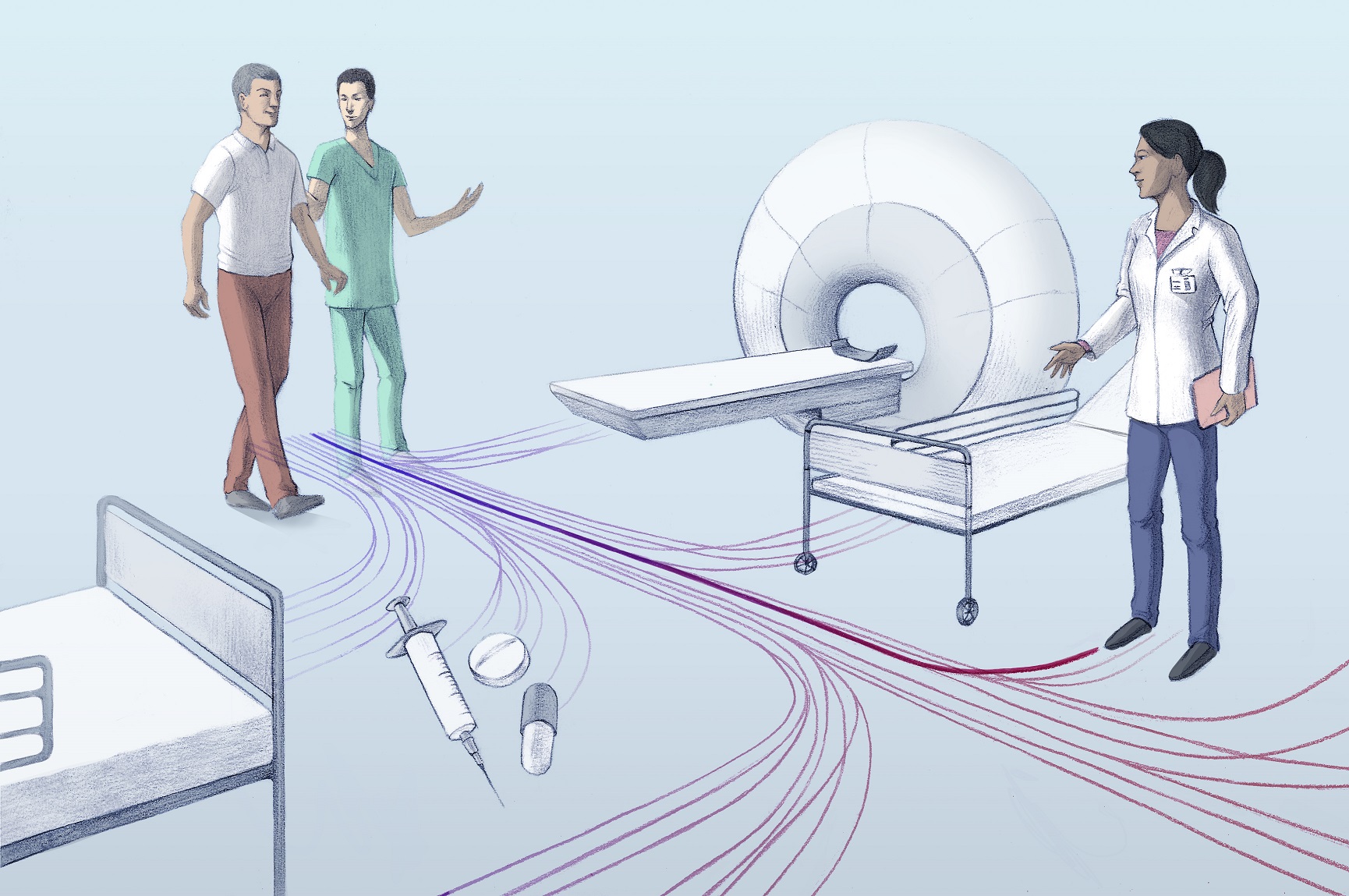Improving organization in hospitals through digital simulation
How can we improve emergency room wait times, the way scheduled hospitalizations are managed and cope with unexpected surges of patients? Vincent Augusto, a researcher in healthcare systems engineering at Mines Saint-Étienne is working to find solutions to these problems. He is developing programs based on digital simulation, aimed at optimizing influxes of patients and waiting times at the hospital, especially in emergency care facilities.
Chronic emergency department saturation and unacceptable wait times for receiving care are regularly listed among areas in need of improvement. Several of these areas have been studied: taking preventive action beforehand to reduce influxes of patients, organization within emergency departments, managing hospitalizations in advance. Vincent Augusto and his team from the MedTechDesign living lab at the engineering and healthcare center at Mines Saint-Étienne have developed models that contribute to these last two areas by providing valuable information. “We worked on successive projects with hospitals to develop programs using digital simulation. The principle is that any system can potentially be monitored and reproduced based on the data it generates; being able to process this data in real time would help to optimize resources. Unfortunately, major inequalities exist in terms of computerization from one hospital to another.”
Vincent Augusto is specialized in modeling, analyzing and managing inflows of patients in hospitals. “At the hospital in Firminy, we modeled unforeseen arrivals in the emergency department to get a better idea of the number of beds required and to improve planning for scheduled patients.” The departments schedule hospitalizations for patients needing diagnostic scans or treatment. However, since it is difficult to predict the number of available places in advance, scheduled hospitalizations must sometimes be canceled at the last minute, forcing patients to wait longer to receive care. On the other hand, the shortage of beds leads to overcrowded emergency services. Improving the management of the internal and external flow of patients in hospitals is therefore of utmost importance.
A modular digital twin
At the university hospital (CHU) in Saint-Étienne, the team developed a digital twin for the emergency department. This twin helped assess the different measures that could be implemented to improve emergency operations. Vincent Augusto explains how this was developed: “First, there is an on-site observation phase. We collect data using existing software. Next, there is a development phase in which we seek to understand and model the flow of patients in the department and create an initial model on paper that is confirmed by the department staff. We can then create a digital assessment model that reproduces the way the emergency department operates, which then undergoes a validation phase.”
The researchers use the department’s activities from the previous year to accomplish this. They enter the data into the system and check if the indicators predicted by the model match those recorded at the time. This approach involves three different components: the first analyzes the patient care circuit, the second analyzes human resources based on type of activity and the third focuses on the organization and interdependence of the resources. “Once this model has been validated, we can use the modular system to test different scenarios: we can alter the human resources, simulate the arrival of an inflow of patients, reduce the wait time for taking further tests—such as scans—or the time required to transfer a patient to a hospital ward,” the researcher explains.
The first measure tested was to divide emergencies into three groups: serious emergencies (road accidents, respiratory problems, etc.), functional emergencies (sprains, wounds requiring stitches, etc.) and fast functional emergencies (requiring care that can be quickly provided). Upon entering, the patients are directed to one of these three groups led by different teams. According to Vincent Augusto and the system users, “this makes it possible to clearly assess the savings in terms of time and costs that are related to organizational changes or an increase in human resources, before any real changes are made. This is a big plus for the departments, since organizational changes can be very time-consuming and costly and sometimes have only a small impact.”
The real impact the organizational measures would have on emergency department operations was assessed and made it possible to continue work on another potential area for improvement: the creation of a psychiatric section within the emergency department, with beds reserved for these patients. To help draw up the plans for the future emergency services, the team from Mines Saint-Étienne is developing a virtual reality interface to directly and realistically view flows of patients more easily than the indicators and charts generated by the digital simulation system. The goal is to optimize the patient circuit within the department and the medical care they receive.
Improving hospitals’ resilience in unexpected events
This method also offers management support for crisis situations involving a massive influx of patients to the emergency department in the event of disasters, attacks or epidemics. “The system was developed to manage, in addition to the usual flow of patients, an exceptional yet predictable arrival of patients,” the researcher explains. It is therefore useful in voltage plans: exceptional situations that push the system beyond its capacity. In these cases, the department must face a critical situation of responding to hospital emergencies that can lead to a French emergency “white plan” being declared, in which non-priority activities are cancelled.
To accomplish this, the program is updated in real time via a direct connection to the hospital’s computer systems. It can therefore determine the exact state of the department at any time. By entering a varying number of patients with specific pathologies in a given situation (flu-related respiratory difficulties, gunshot wounds, etc.), the simulation can determine the most effective measures to take. This is what the engineers call an operational tool. “In the short and medium term, the departments now have a tool that can help them optimize their response to the problems they face and improve the care patients receive,” concludes Vincent Augusto.
Original article in French written by Sarah Balfagon, for I’MTech.





Leave a Reply
Want to join the discussion?Feel free to contribute!